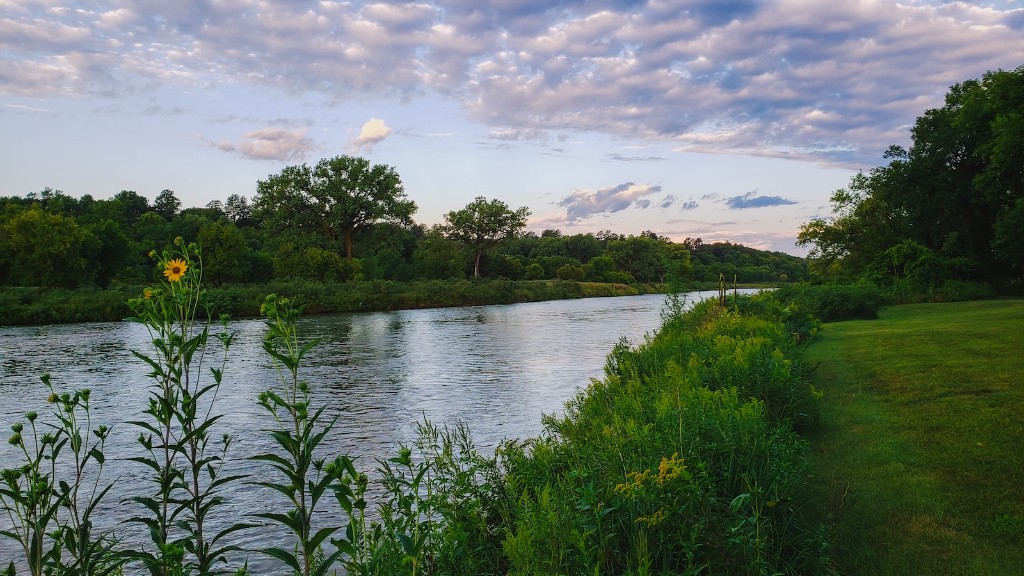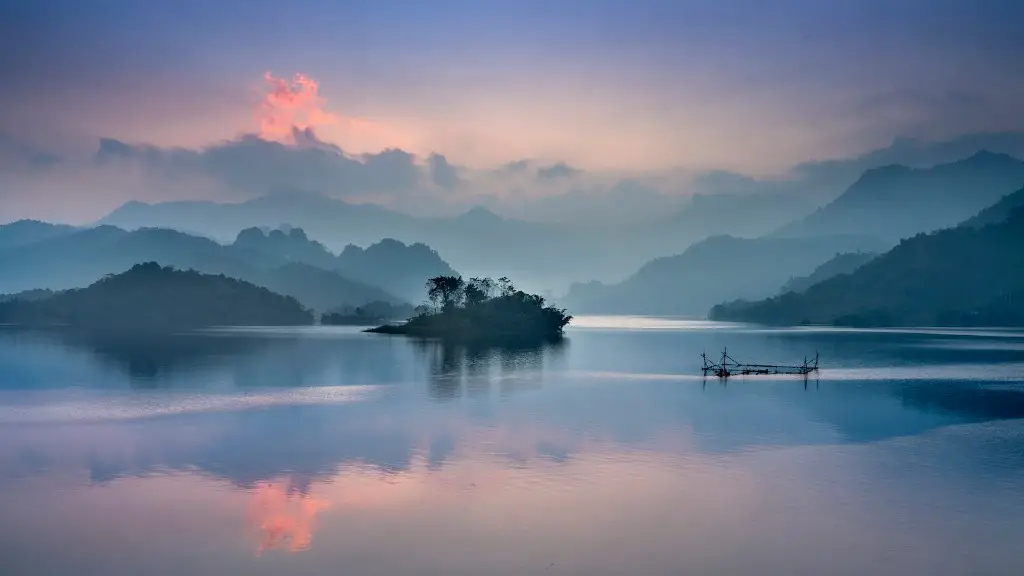Background Information of Nile River
Nile River is a prominent river in north-east Africa, flowing across six countries: Uganda, South Sudan, Sudan, Congo-Kinshasa, Tanzania, and Ethiopia – and finally emptying into the Mediterranean Sea in Egypt. Measuring over 4,100 miles/6,700 kilometers in total length, the Nile is the longest river in the world. Its name hails from the Greek word for valley, nilus.
Relevance to Crocodiles
Are there crocodiles in the Nile River? The short answer is yes – the Nile River is indeed home to several species of crocodiles! In fact, Nile crocodiles (Crocodylus niloticus) are the largest reptilian inhabitants of the Nile River basin. This species lives throughout sub-Saharan Africa and is the most dominant of the three species of crocodile that live in the Nile Basin.
Behavioural Patterns & Lifestyle
Nile crocodiles prefer large bodies of fresh water and can grow to be a length of over 17 feet/5.2 meters, although the average size is usually around 12 feet/3.6 meters. They have a dark gray color, powerful jaws, and long, tapered snouts. Being opportunistic predators, they also have an impressive appetite, and aren’t shy about “ambushing” their prey.
Adaptability & Survival
Nile crocodiles can adapt to a wide range of environments where other crocodilian species including the American crocodile and the saltwater crocodile cannot survive. They feed mainly on fish, small mammals, reptiles, and can even attack small animals like young hippos and antelopes. They are surprisingly tolerant of disturbed habitats, allowing for the development of cities and roads nearby.
Migration Habits & Threats
Nile crocodiles also migrate for food. Although solitary creatures, Nile crocodiles often migrate to breeding colonies – chiefly during long dry seasons when fishing grounds are scarce. It is important to note that Nile crocodiles can still be threatened by human activities such as pollution, hunting and poaching, induced mortality, and disruption of their habitats.
Actions of Conservation
To ensure the survival of the Nile crocodile, actions of conservation should be taken to protect their habitats. This can be done through protecting land use, providing habitat management plans, education and awareness, reducing pollution, and by enforcing laws prohibiting hunting and the trade of crocodile skins and other products.
Expert Perspectives
According to experts from the University of Florida, humans are the greatest threat to the Nile crocodile due to fragmentation of their habitats as well as habitat degradation. They believe that to conserve healthy populations of this species, everyone should band together to promote the conservation of their habitats.
Analysing the Effects of Human Activity
Humans can impact a species’ population by disrupting the Nile River through activities like water diversion, fishing, and mining. These activities can reduce the size of the Nile crocodile’s habitat, leading to decreased food resources and potential breeding areas, while further exacerbating threats like illegal hunting and global warming.
Final Thoughts on Crocodiles in the Nile River
In conclusion, it is clear that Nile crocodiles are an integral part of the Nile River system, providing important ecological services, and should be protected. It is up to us to take action and to ensure that their habitats continue to remain healthy and protected from the harms of human activities.
Impact of Climate Change
The effects of climate change are becoming increasingly evident on the Nile River and its inhabitant species. Cracking up of the soil structure because of drought, rising air temperatures, and desertification are putting the Nile crocodiles at risk of extinction due to lack of food resources, higher temperatures and insufficient moisture. As this species is particularly sensitive to climate change, action should be taken to ensure its survival.
Major Challenges & Environmental Threats
The major challenges that the Nile crocodiles are facing include the destruction of their habitats due to the Nile damming projects and human developments, overfishing of fish, hunting, illegal trade of crocodile skins and other materials, pollution, and oil spills. Excessive use and exploitation of the Nile River by humans is leading to a decrease in water resources and biodiversity, resulting in the endangerment of the Nile crocodile.
Exploring Conservation Efforts
In regard to conservation, various programs have been established to help protect these species. For instance, the Nile Crocodile Conservation Project (NCCP) established in 2017 was designed to restore the habitats and populations of the Nile crocodile by researching, monitoring, and managing the species, while providing community and government education.
Societal Perspective & Awareness
In addition to these conservation efforts, it is essential that society is also informed about the importance of safeguarding the species, providing an incentive to protect the Nile crocodile. Governments, universities, and non-profit organisations should provide adequate awareness about the impacts of the Nile crocodiles on the ecosystem and humanity.
Solutions for the Future
In sum, the future of the Nile crocodile species is in the hands of us humans, with the need for us to actively contribute to conservation measures and awareness programs. Furthermore, it is also essential that policies are put in place to encourage sustainable development along the Nile River and its tributaries, thus allowing for the protection and future of the Nile crocodiles and its inhabitants.
Impact of Human Commercial Enterprise
Due to its slow reproductive rate, Nile crocodiles are particularly at risk from the overexploitation of the fishing industry, with growing demands for Nile perch as more people become aware of the fish’s nutritional benefits. Moreover, while fishing regulations have been implemented in some areas, they are often insufficient and are not being adhered to.
Hydropower Generation & Threats to Species
The construction of hydropower dams on the Nile River is also a threat to the species, as it causes changes in the ecosystem of the region, such as decreasing the water’s oxygen levels, destroying habitats and vital breeding grounds, as well as changing the river’s flow rate. This potentially leads to a decrease in the number of prey which in turn affects the species’s ability to survive and reproduce.
Ensuring Sustainable Development along the Nile River
Clearer regulations for sustainable development along the Nile River are needed in order to ensure the future of its species and habitats. These regulations should include limitations on water consumption, adherence to the existing regulations, and the introduction of buffer zones to prevent the degradation of river habitats.
International Protocols & Key Agreements
International protocols such as the Nile Basin Initiative are also necessary to ensure the sustainability of the species. It is a unique international effort to work in the management and development of the river’s biodiversity. It includes key agreements to promote the development of the river and its wildlife, allowing for sustainable development for all countries involved.




